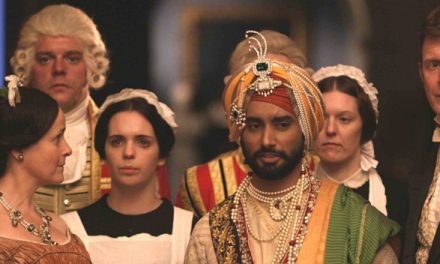This article is authored by a guest writer Jaswinder Kaur Kalsi, follow her on twitter at: @jasikjas
Without a doubt religion and politics cannot be separated in Sikhi or Sikh history. Born out of social inequality, oppression and forced conversion of minorities – a religious and political ideology has indeed been a chief characteristic and driving force of the Sikh panth.
What however, of the role women have played in Sikh political history? I will not dwell on the much repeated concept or rhetoric of equality for women in Sikhi which portrays their elevated position as mothers, birth givers of kings, rulers and martyrs, rather than as commodities to be burnt at the funeral pyres of their husbands. It is enough to say that The Guruji’s mothers, wives and sisters all played recognised roles alongside the Gurus as well as those women who fought shoulder to shoulder with the Khalsa Army during the last stages of Guru Gobind Singh ji’s battles. The wives/mothers of many prominent soldiers and leaders post Guru Gobind Singh Ji, and not forgetting those women who were imprisoned alongside the men folk and who had their babies bodies strung around their necks, all played a significant role.
I would consider the sacrifices made by these women perhaps far greater, but sadly, less recognised and even forgotten. I also wonder if the role of these Sikh women as one of ‘sacrifice’ is even recognised – these women are not referred to as Shaheeds. Also forgotten, seem to be the significant political roles that some prominent Sikh women played after the Guruship period, most notably Mata Sahib Dev ji (wife of Guru Gobind Singh ji), who led and guided the Sikhs for at least 30–39 years following His demise and issued 8 hukamname to the Khalsa Panth, as with Bibi Sahib Kaur, the elder sister of Raja Sahib Singh of Patiala, who was appointed Prime Minister and head of a large Patiala army to rescue her husband who had been captured by Fateh Singh, a rival chief. Other prominent Ranis’ at this time actively participated in state affairs and administration leading the British diplomat Lepel Griffin to write that the Sikh women “have on occasions shown themselves the equals of men in wisdom and administrative ability.”
So the question I now ask is where is the recognition of the role of Sikh women? Where have the Ranis gone? Sikh HERstory remains silent on the political contributions of these notable women. Where are the voices of women in current Sikh politics? Where are the jakaras for the women who have contributed and sacrificed so much for the panth?
Where is the voice for the thousands of women raped, killed, widowed and crushed under the tanks during and after the Sikh genocide of 1984? Where are the Sikh females or for that matter any female historians on our discussion or consultation panels inside Punjab/India or amongst the Diaspora? Will Sikh women continue to be confined to romanticised, idealised, sacrificial, supportive and silent roles only? Their actual roles seem to be still constrained to the langar halls, protest marches and in service of others.
In Punjab, Sikh women are still forbidden from doing paath, kirtan seva, being a part of the Panj Pyare or allowed to carry the Palki Sahib at Harmandir Sahib, which is otherwise built on the concept of equality and having an open 4-door policy. With a few exceptions almost all Gurdware in the UK and Europe are male dominated; Sikhi is still a macho-dominated panth which is cut-throat and divisional amongst its many sects and groups, still unable even to reconcile amongst its own, and therefore an unwelcome prospect for any woman who may actually wish to speak. They are out there – historians, business leaders, lecturers, authors, Gurdwara committee members, Judges, MP’s, Government Ministers and leaders of international charities and women’s groups; Bibi Prakash Kaur, Bal Kaur of Khalsa Aid and Majinderpal Kaur of United Sikhs just to name three. But an independent opinion often invokes personalised attacks, fury and backlash on social media, so the chances for these women to speak on a national stage are daunting. There is also an obvious lack of articulate female presenters on any of the Sikh TV Channels save maybe a newscaster and one or two passionate women (apart from the giggly cooking or dressmaking presenters).
Why are female academics and historians not consulted on Sikh issues? Do they all have to be ‘Sikh’ women? Do they all have to be turbaned and bana wearing to have a voice? There may be a modern day revolution taking place at the moment, but there is also in my eyes a much needed revolution to not only recognise but actually achieve equality for women everywhere, free from female infanticide and gender discrimination, where all girls and women can live free from the fear of alcohol, abuse, rape, murder and dowry demands. Why was this not one of the Sarbat Khalsa demands? Sikhi needs not only to be heard, but seen to be recognising Sikh HERstory, practicing and preaching basic principles of equality for women amongst themselves and in their own households and institutions. Any woman can and does educate and inspire whole generations. To avoid accusations of deliberate discrimination, Sikhi needs to be inclusive rather than exclusive of women. It is as simple as that.




